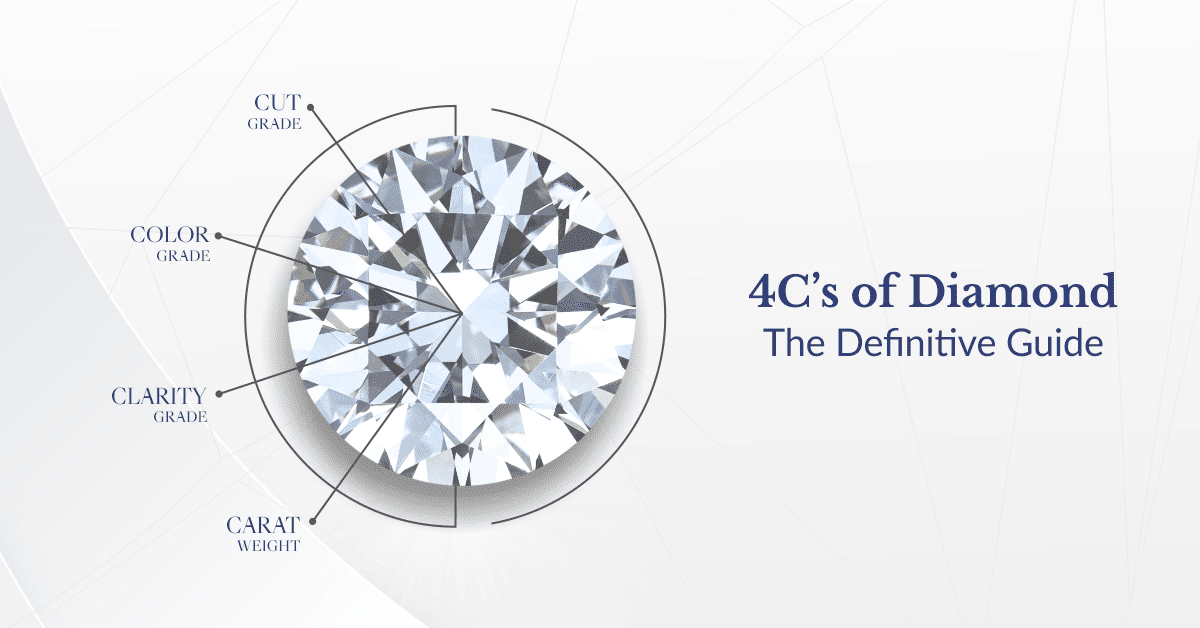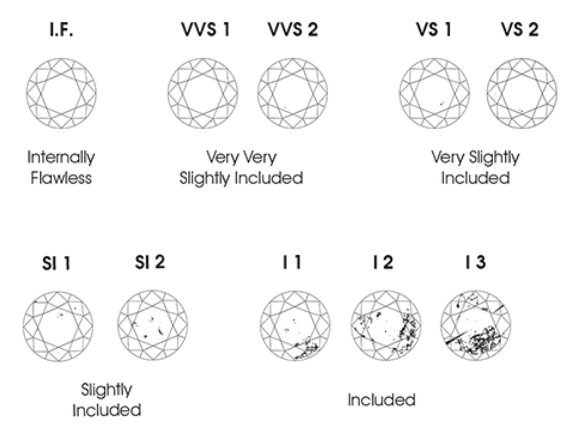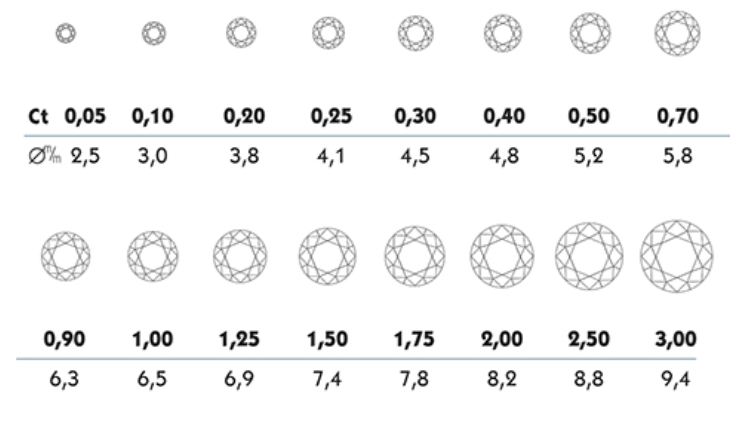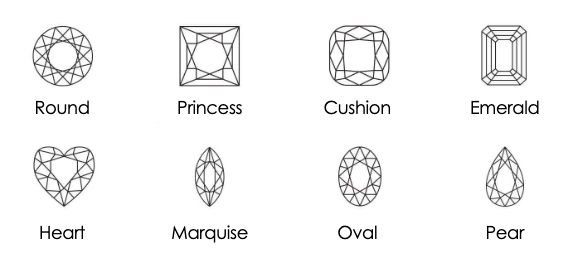COME SEE US AT: Select Show Dallas, TX Sep 8-9 and Select Mohegan Sun Sep 15-16

The 4Cs are the globally accepted guide to assessing a diamond’s quality and characteristics. They are a standard by which the Jewelry Industry grades a stone’s features and value. The 4Cs comprise Cut, Color, Clarity, and Carat Weight. Though a combination of the 4Cs contributes to the diamond’s evaluation, Cut is widely regarded as the most essential “C” as it determines the way the gem sparkles. Read on below for more information regarding the 4Cs
CUT

A diamond’s cut does not, in fact, have to do with its shape, or the outline of the stone. Cut is determined by the way the stone’s facets are angled and proportioned. Width and depth are taken into account, as well as its ability to reflect light, and the skill to which it was cut. Cut is widely regarded as the most important “C” as it largely contributes to your stone’s physical beauty and ability to sparkle.
Cut is often confused for shape and it’s important to be mindful of this distinction. Shape refers to the stone’s outline - whether it’s Round, Princess, Oval, etc. But cut, more specifically, acts as an assessment of the skill with which the artisan maps and cuts each stone’s facets - determining how much light is able to enter the stone and reflect back through it. Proportion, symmetry, and polish are essential factors of a diamond’s cut.
COLOR

The more colorless a diamond, the more light can pass through, and the more radiant and sparkly it appears. The color assessment scale runs D - Z with D being colorless and the rarest.
CLARITY

Diamond clarity refers to the absence of inclusions and blemishes. In other words, the lack of internal and external characteristics affects diamond clarity. The extraction process naturally traps tiny particles inside the diamond. These minuscule flaws, called inclusions, can exist both inside the gem and on its surface. The less inclusions, the more flawless and rare the diamond.
When grading, clarity is usually characterized by two categories-
Inclusions: small imperfections that naturally occur inside the diamond during its formation.
Blemishes: small imperfections that occur on the diamond’s surface or come to be during the cutting and polishing process.
CARAT

People often think the size of a diamond is relative to its carat weight, but carat is a weight-based measurement and doesn’t always directly correlate to size. The size of a carat appears differently throughout different diamond shapes, and a diamond should always be cut to maximize brilliance over size.
SHAPE

Diamond shape is, first and foremost, not one of the 4Cs. Yet, it is one of the most personal and stylistic elements related to your ring selection. Shape is an indicator of your own taste, identity, fashion sense, and personality- it’s a huge choice when it comes to your forever stone.
That said, the most popular diamond shape for an engagement ring is the round brilliant - the shape provides the greatest amount of sparkle and is a truly classic look. Ovals, Emeralds, and Cushion cut diamonds have all experienced recent popularity, but will always remain timeless as well. It’s a matter of personal aesthetic preference and should be a fun part of the process!
